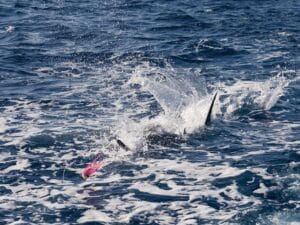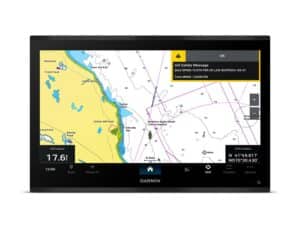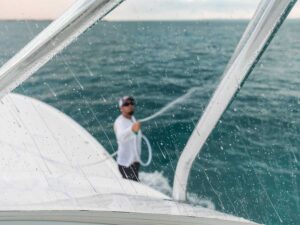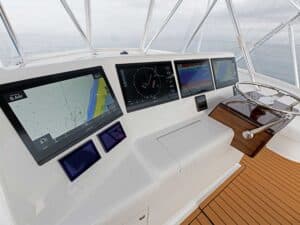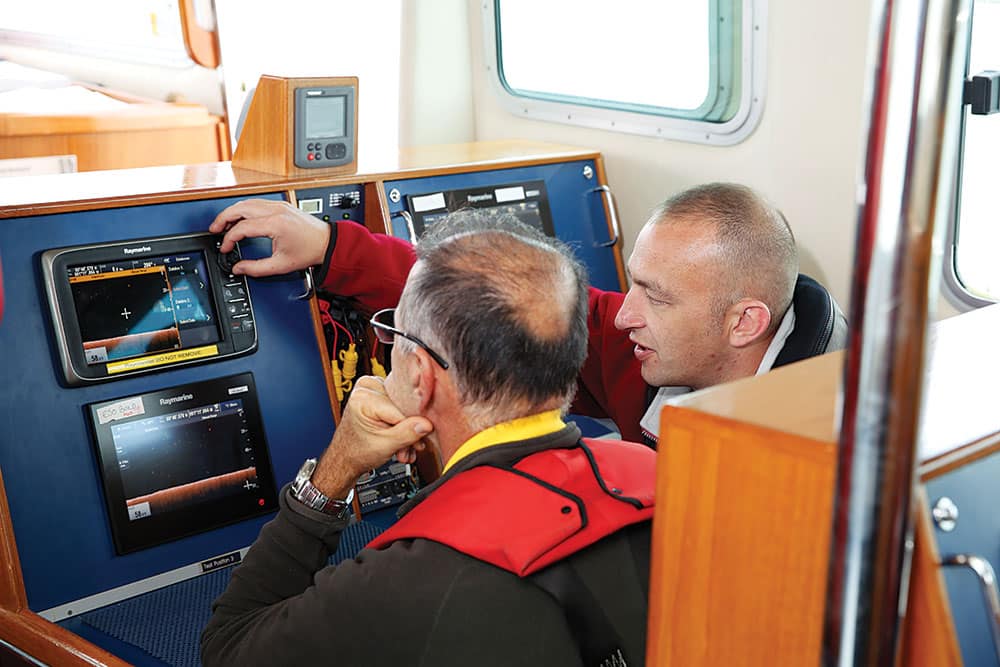
A trip to Raymarine
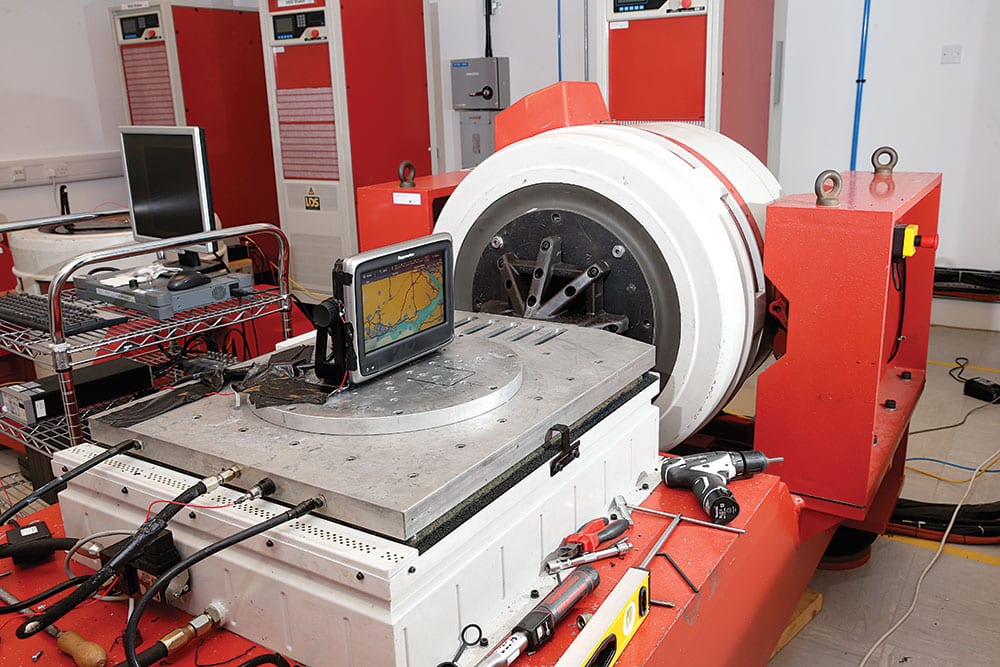
Tested in all conditions
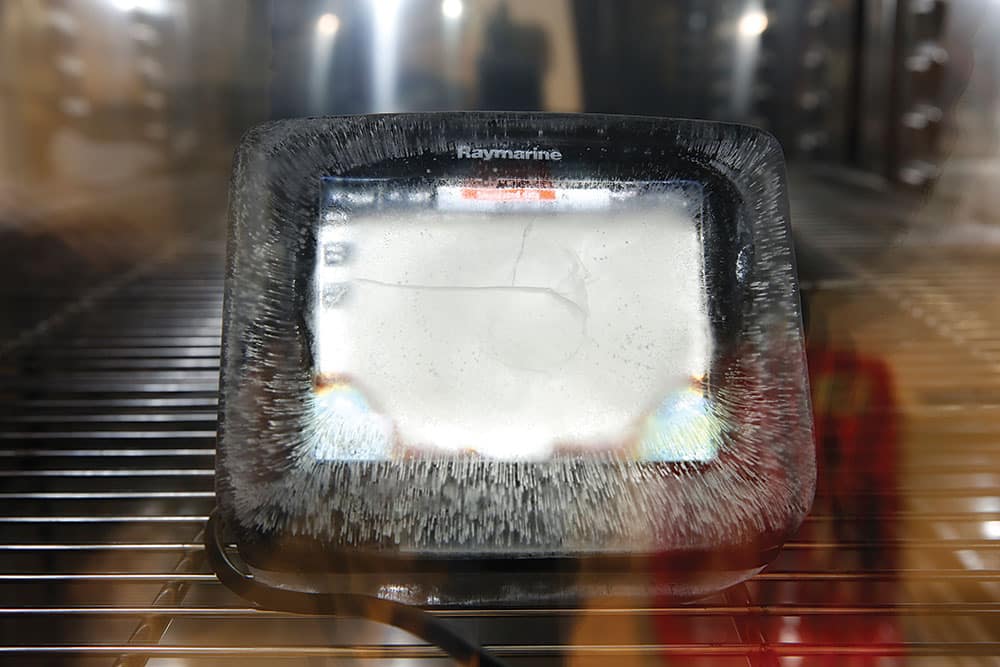
Off to the freezer

A trip to Raymarine
At the invitation of Raymarine, Marlin trekked to Fareham, Hampshire, in the United Kingdom to meet the engineers in the company’s factory. It was an opportunity to meet the programmers who make the hardware do what we want it to do, and to meet the reliability testers who tried to break it so that you couldn’t.
Multitouch and Lighthouse II Interface
Raymarine’s most recently released display is the new multitouch a-Series, and it also sports a new interface called Lighthouse II. The new system brings complete multitouch functionality to the displays and greatly simplifies the effort needed to learn and to operate the system. And here is the beauty of what Raymarine has done with its displays: They’ve been upgraded to practically any new function or upgrade foreseeable, thanks to an extremely powerful processor. That means if you’ve bought a Raymarine display in recent years, the new Lighthouse II system can be loaded onto it.
We see an annual parade of smart new gadgets, so we boaters are getting rather droll in our reaction to new navigation gear. We are used to it doing whatever occurs to us it might do. Raymarine’s new nav tools, displays and Lighthouse II interface are on target to accomplish just that: exactly what we think they should do. With multitouch gestures like swipe, pinch-to-zoom and touch-to-open and hold to access certain menus, the system is a snap to learn; it feels like using your smartphone.
You can drag and drop waypoints, tweaking destinations and routes to make setting and navigating a course with autopilot easy. Sonar capabilities include CHIRP and the exciting, affordable CHIRP DownVision with a wide-angle transducer.
CP100 CHIRP Sonar with DownVision
The black box CP100 CHIRP sonar with DownVision works with a, c, e and gS series multifunction displays. These displays (and Dragonfly) can show DownVision side by side on the screen, giving anglers a rapid education in interpreting the new CHIRP DownVision images. CHIRP technology and a wide-angle cone paint the bottom; when you couple the detailed sonar returns CHIRP is known for with the wide-beam angle, high-resolution screen and powerful processor interpreting the signals, you get a near photo-like image of bottom structures, fish and debris.
Evolution AI Auto Pilot
The Evolution AI Auto Pilot was -introduced more than a year ago, but our first detailed look into its workings was presented at Fareham. It was built to solve a common problem suffered by all autopilots: a complicated installation process including a fluxgate compass and heading sensor. These should be perfectly placed near the centerline and away from metal objects and stereo speakers that can affect their input (try to find that in a modern day boat). Then their input into the pilot must be painstakingly adjusted for magnetic error. Put a new fire extinguisher on board and that amount of steel alone can throw off its adjustments and send you off course.
Autopilots and their operators must constantly be aware of the difference between magnetic and true north. The closer you journey toward the equator, the greater the difference between the readings. Travel below the equator and navigation problems become even worse.
The Evolution AI has a single EV Sensor Core module that can be mounted anywhere in the boat above or below deck, on or off the centerline, right side up or upside down. In the core are the very same position sensors and accelerometers that make smartphones smart, but in the EV sensor, there are three of each of them. The system is programmed to know exactly what the magnetic course should be, what the true position and true north is and it knows what gadgets on board are causing false readings. In short, it compensates for the recently mounted fire extinguisher or the cool new Boga Grip set on the helm. By comparing the sensor’s new information with the old information and its programmed position information while monitoring course, position and heading, it nearly instantaneously learns to overrule that new stimulus.
If that’s not enough, using its accelerometers, it determines sea state and its impact on the vessel. That information is used to adjust steering sensitivity, slowing the process on calm waters and enhancing fuel efficiency. On rough waters, it automatically speeds up steering input to help balance the effect of yaw and bow steering, smoothing the ride.
Breaking Up Is Hard to Do
Now all this stuff is cool … unless it doesn’t work. So to prove that they’ve got a heart for quality control, the folks at Raymarine showed us the proving “grounds” where they try to break their equipment. To test waterproofing, displays and black boxes are heated up so internal temperatures rise as if in full sun exposure. Then they are frozen for days on end, simulating winter storage. Then the displays are rotated on a turntable in front of a pressurized 1-inch column of water. We even took a turn at running the hose job. This repetitive process simulates the effect temperature and water exposure have on the unit over time. After that test, the salt-mist test is sort of anticlimactic, but they do it and pass it anyway.
If you’ve ever wondered how pounding seas affect your unit, you can look to Raymarine’s shake, rattle and roll test. Samples of each model are subjected to days of shock and vibration, while sensors monitor G-force and the harmonics of vibration in all key locations. Unacceptable vibrations are noted, and structural changes are made to the displays to combat them.
Steady Power
Perhaps most problematic to marine electronics is the fickle state of DC power on nearly every boat. You can bench test a power-thirsty aSeries display on a -perfect 12 volts in a lab, but you’ll never find that on a boat. Voltage ranges throughout a fishing day from below to above 12 volts, and Raymarine’s engineers work to make sure that their units can withstand the real environment in which their equipment must function.
I’m fond of side-scanning sonar for looking under weed lines and along drop-offs or jetties. Ray’s wide-angle CHIRP Downscan gives a uniquely broad fish-painting image, but it’s not side scan. In Simrad and Garmin units, for instance, you can drag a sonar screen back from the left, tap an interesting echo, like a wreck or rock pile, and set a new waypoint on your GPS at that structure’s exact position. Raymarine assures us it’s constantly adding to its displays’ rich feature list. Here’s the best part: When a new feature is added, often a simple firmware update will make the display you bought last year equal to the displays introduced next year.
